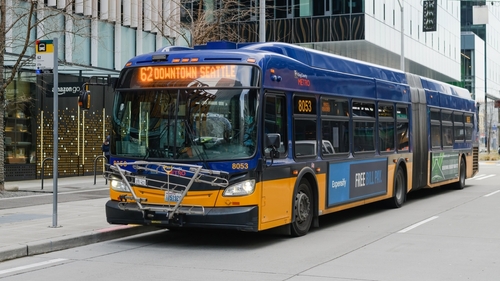Seattle is a city full of life. Each neighborhood has its own personality, from buzzing coffee shops and lively music spots to quiet parks with stunning mountain views in the distance. But if you’ve just moved here, figuring out how to get from point A to point B can feel a little overwhelming. The good news is that Seattle’s public transportation system is well-connected, affordable, and a great alternative to the stress (and cost) of driving everywhere.
At Remitly, we understand what it’s like to arrive in a new city and have to learn everything from scratch. Even something as simple as hopping on the right bus can feel like a big task. That’s why we’ve put together this guide. We’ll walk you through Seattle’s main ways to get around, share local tips to make your trips easier, and point you toward resources that’ll help you feel more confident navigating the city in no time.
An overview of public transportation in Seattle
Seattle’s public transportation system offers plenty of ways to get around without a car—a blessing in a city famous for its traffic jams and sky-high parking fees. Between buses, the Link light rail, the Seattle Streetcar, ferries, and water taxis, you’ve got several options to help you navigate the city’s hills and neighborhoods without the worry of driving.
A quick look back
Public transit here has a fascinating history that shaped what you see today. Streetcars first appeared in the late 1800s, linking early neighborhoods with downtown. By the early 1900s, Seattle had one of the largest streetcar networks on the West Coast, making it easy to get around without a car long before they were common.
However, like many US cities, Seattle shifted toward buses and personal vehicles in the mid-20th century, leading to the removal of most streetcar lines.
In the 1970s and 80s, as traffic and pollution worsened, Seattle began reinvesting in public transit. This push eventually led to the launch of Sound Transit and the Link light rail system, which opened its first line in 2009 and continues to expand today. The city also brought back modern streetcars in select neighborhoods and strengthened its ferry network, a long-standing lifeline connecting Seattle to surrounding islands and peninsulas.
How Seattle’s transit system works today
Now, with an ORCA card in your pocket, you can jump between buses, trains, ferries, and streetcars with a single tap. Most rides cost under $3 USD, making public transit not just practical but budget-friendly.
The system is designed to help you reach major job centers, schools, shopping districts, and scenic waterfronts with ease and, thanks to years of investment, it keeps improving every year.
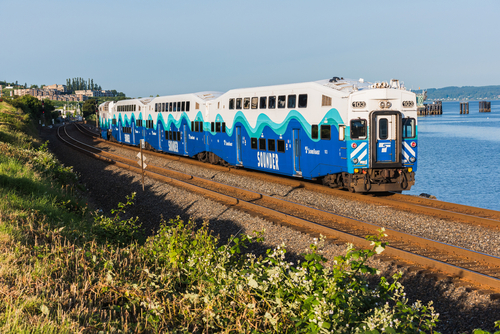
Getting around Seattle
Seattle has a lot to offer, but if you’re new to the city, figuring out how to get from one place to another can feel overwhelming at first.
Link Light Rail
The Link Light Rail is one of the fastest and easiest ways to travel through Seattle. It runs from Northgate in the north, through downtown, and all the way down to Angle Lake, with a direct stop at Seattle-Tacoma International Airport. Many newcomers enjoy using the light rail for quick airport trips or exploring popular spots like Capitol Hill and the University District without worrying about parking.
King County Metro buses
Buses are the heart of Seattle’s transit system, connecting nearly every neighborhood and many nearby suburbs. They run frequently, making them a reliable option whether you’re heading to work, school, or just running errands.
The easiest way to pay is with an ORCA card, a reusable travel card that works on buses, light rail, ferries, and streetcars. If you’re paying cash, make sure you have the exact fare since drivers can’t give change. For longer rides, look out for RapidRide buses, which make fewer stops and get you to your destination faster.
Seattle Streetcars
If you’re not in a hurry, the Seattle Streetcars are a slower but more scenic way to get around parts of downtown. They currently serve two routes: South Lake Union and First Hill. These are great for short trips between cultural districts, hospitals, and shopping areas.
Water taxis and ferries
Few cities can beat Seattle’s ferry rides. Whether you’re taking a quick water taxi to West Seattle or hopping on a ferry to Bainbridge Island or Bremerton, these trips offer more than just transportation; they’re a mini sightseeing tour of their own.
Fares are usually under $10 USD for passengers, though it’s smart to plan ahead on weekends when boats can fill up quickly. If you’re bringing family or friends along for a scenic day trip, getting there by boat is half the fun.
Bikes and E-Scooters
For short hops or to finish the last leg of your trip from a bus or train stop, bikes and e-scooters are a handy option. Companies like Lime and Spin have vehicles you can unlock through an app and pay for by the minute.
They’re perfect for running quick errands or enjoying a ride along the waterfront on a sunny day. Just keep in mind that Seattle’s famous rain can make streets slick, so take it easy on wet days.
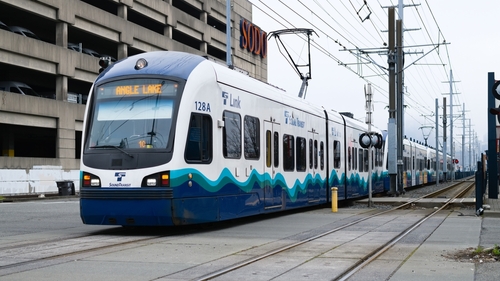
How to navigate Seattle’s public transit system
Figuring out a new city’s transit system can feel like a puzzle at first, but don’t worry, Seattle makes it easier once you know a few tricks. With the right apps, a handy little card, and some local know-how, you’ll be getting around like a pro in no time.
Plan your route like a local
Your phone will be your best travel buddy here. Apps like Google Maps, OneBusAway, and Transit GO Ticket give you real-time updates, step-by-step directions, and even let you buy tickets without needing cash.
They’re available in different languages too, which is a lifesaver if you’re still getting comfortable with English. Planning ahead saves you from that “uh-oh, where am I?” moment at the wrong bus stop, or worse, missing your ferry by two minutes.
Get yourself an ORCA card
Think of the ORCA card as your all-access pass to Seattle’s buses, trains, ferries, and streetcars. Instead of juggling change or buying separate tickets, you just tap and go. You can grab one at light rail stations, local stores, or order it online and load it with money whenever you need.
The best part is that if you switch between transit types within two hours, those transfers won’t cost you a thing. It’s perfect for days when you’re bouncing between neighborhoods.
Know when and how to transfer
Seattle’s buses and trains run often during the day, but if you’re heading out late at night, check the schedules first, as service slows down after hours. Rush hour is usually mornings and late afternoons on weekdays, so expect a crowd during those times. If you’re making multiple connections, give yourself a little extra buffer time.
Pro tip: follow accounts on social media or check transit alerts in your apps to stay ahead of delays and reroutes.
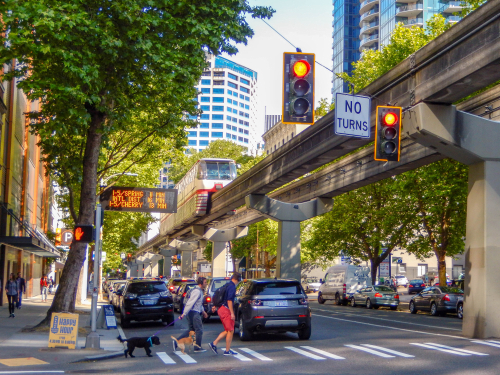
Must-know tips for traveling like a local
Seattle’s public transportation is pretty straightforward, but knowing a few insider tricks will save you some awkward moments and help you ride like a true Seattleite.
Paying with cash
Don’t have an ORCA card yet? You can pay cash on most buses, but you will need exact change. Drivers don’t carry coins or bills to swap, so have your fare ready before you hop on. Ticket machines on the light rail and streetcars accept cash, too.
Be weather-ready
Seattle has a reputation for rain for a reason. While some bus stops have shelters, you’ll often end up waiting outside, so remember to carry a small umbrella or a good waterproof jacket.
A quick note on transit etiquette
Seattleites like their rides calm and low-key, especially during morning commutes. Pop in your headphones if you’re listening to music, keep phone calls short and quiet, and always offer your seat to someone who might need it more. It’s not just good manners, it’s how locals make public transit a bit nicer for everyone.
Exploring Seattle’s must-see spots on public transit
One of the best things about Seattle’s public transportation system is how easily it connects you to the city’s most iconic destinations. Whether you’re sightseeing solo, hanging out with friends, or showing family around your new home, you can skip the stress of parking and expensive ride-shares. Just hop on a bus, train, or ferry and go.
Pike Place Market
You can’t say you’ve been to Seattle until you’ve seen the flying fish at Pike Place Market. Dozens of King County Metro buses stop just steps away, making it easy to spend an afternoon wandering through fresh produce stands, visiting local craft stalls, and watching street performers. Don’t forget to check out the famous Gum Wall while you’re there—it’s a Seattle classic.
Space Needle and Seattle Center
The Space Needle is a Seattle icon for a reason. To get there, hop on the Link Light Rail to Westlake Station and take the short Monorail ride straight to Seattle Center. Aside from the Needle, you’ve got the Museum of Pop Culture (MoPOP), Chihuly Garden and Glass, and plenty of food trucks to fuel your adventure.
Alki Beach
When the sun makes an appearance, head to Alki Beach for its calming waterfront scenery. Take the water taxi from Pier 50 to West Seattle, then catch a shuttle to the beach. You’ll find sandy shores, beachside cafes, and amazing views of the Seattle skyline across the water.
Discovery Park
Discovery Park is Seattle’s biggest green space, with forest trails, bluff-top views of Puget Sound, and quiet beaches that feel miles away from downtown. Bus routes #24 or #33 will get you there with no problem.
Other local favorites you can reach with public transit
- Gas Works Park: Famous for its panoramic city views and summer movie nights on the lawn, Gas Works is a must-visit. You can catch the bus route #62 from downtown, which drops you just a short walk from the park entrance.
- Ballard Locks (Hiram M. Chittenden Locks): Watch boats move between Puget Sound and Lake Union, and don’t miss the salmon ladder during migration season. Take bus routes #17 or #29 from downtown, which stop a few blocks away from the Locks entrance.
- Fremont Troll: This quirky, giant concrete troll lives under the Aurora Bridge and makes for a perfect Instagram shot. Hop on bus route #5 or #40 from downtown, and it’s just a quick walk up the hill to meet your new troll buddy.
- Seattle Aquarium & Waterfront: Located right on Pier 59, you can take bus routes #1, #2, or #3 to get close to the waterfront area, or ride the Link Light Rail to University Street Station and walk about ten minutes down to the piers.
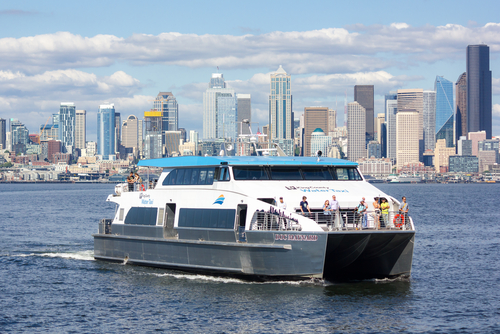
Benefits of Seattle’s transport system
Getting around Seattle without a car isn’t just doable; it can make your life easier, cheaper, and less stressful. Here are a few of the benefits of using public transport.
- Saves you serious money: Between gas, insurance, and parking fees, owning a car in Seattle gets expensive fast. Most transit rides cost under $3 USD, which adds up to huge savings every month.
- Better for the planet: Every bus, train, or ferry ride you take means fewer cars on the road and less pollution in the air. Seattle takes its eco-friendly vibe seriously, and public transit is one way you can pitch in.
- Explore like a local: Public transit makes it easy to discover Seattle’s coolest spots without worrying about parking or getting lost in the city’s one-way street maze.
- Immediate independence: If you’ve just moved to the US, figuring out driving rules, getting a license, or buying a car can take time. Transit lets you get around right away, giving you access to jobs, schools, and city life on your own terms.
- A chance to connect: Buses, trains, and ferries are where Seattleites actually meet each other. Whether it’s a friendly chat with someone new or just people-watching on your commute, public transit gives you a feel for local life.
FAQs
What is the best way to get around Seattle as a tourist?
Public transit is your best bet for exploring the city without the stress of driving and parking. The Link Light Rail and buses cover most popular spots, while ferries offer scenic rides to nearby areas like West Seattle or Bainbridge Island. Bikes and e-scooters are great for short trips once you’re downtown.
How much does public transportation cost in Seattle?
Most bus and light rail rides cost $2.75 and $3.50 USD, and ferries are usually under $10 USD. Grab an ORCA card for easy payments and free transfers within two hours.
Is Seattle’s public transportation safe?
Yes. It’s generally safe to ride buses, trains, and ferries, even at night. Just keep an eye on your belongings and stay in well-lit areas or near other passengers if you’re traveling late.
Do I really need a car in Seattle?
Not for everyday exploring. Public transit covers most neighborhoods and attractions, and you’ll avoid the headache of expensive parking and traffic jams downtown. A car is only really necessary for trips far outside the city.
